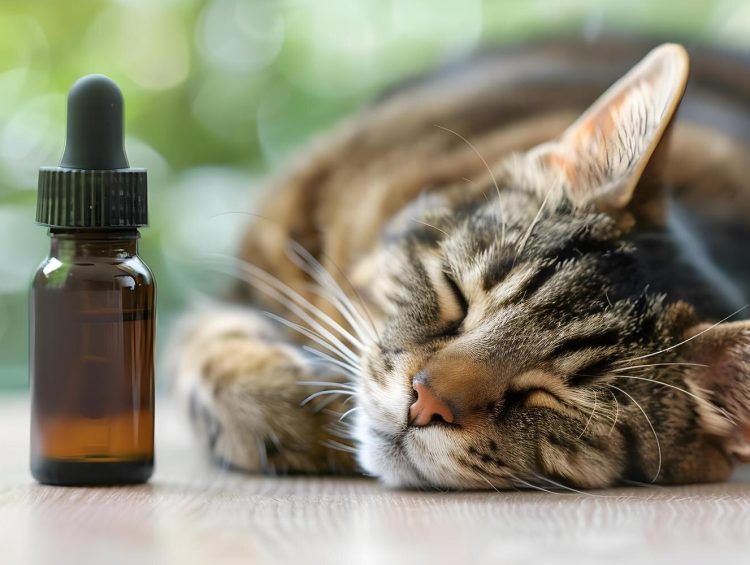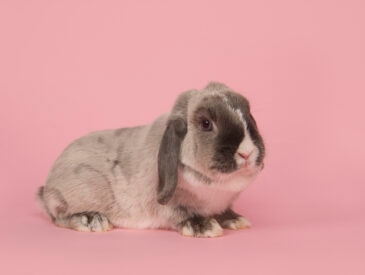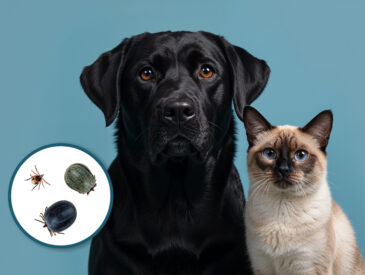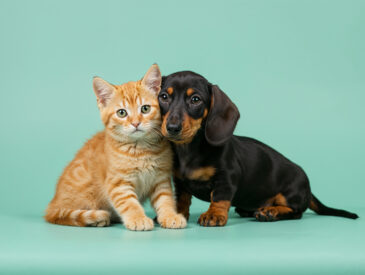Animals are more sensitive to essential oils than humans so extra caution must be taken when using essential oils around them. Whilst we love our pets and would never intentionally try to cause them harm. When I was practicing aromatherapy, many people would mentioned to me that they were unaware of some of the dangers of using essential oils around pets. There is also a lot of conflicting information online. Hopefully this article can help to clarify some of those questions.
This is a basic outline covering the oils and methods to best avoid around pets. If you have more questions please seek advice from a holistic vet or professional trained in aromatherapy for pets.
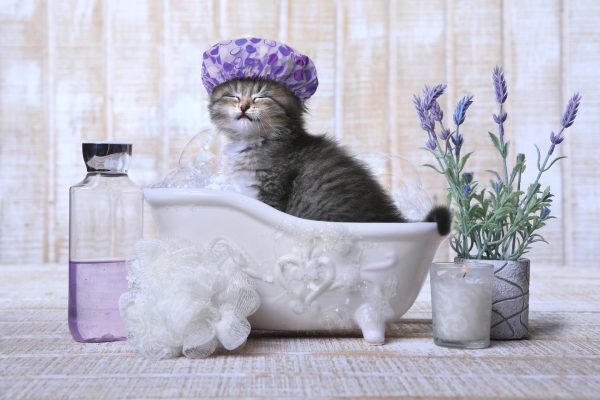
CATS :
Most experts will agree that in most cases it is best to avoid using essential oils around cats. Cats simply are unable to metabolise essential oils due to the lack of glucuronyl transferase, a liver enzyme. Cats are particularly averse to citrus essential oils and high-phenol oils. It is also best to avoid essential oils with significant levels of 1,8-cineole, camphor, limonene, pinene, methyl salicylate & keytones. This includes the “hot” oils, all citruses, pines and firs, along with eucalyptus, peppermint, and tea tree oil to name a few. Please see the detailed list of unsafe oils at the end.
Regular essential oil users may say they have been diffusing essential oils around there cats for a long time and seen no ill effects. However, all cats are different and what may affect one cat may be different to another. An interesting article by Robert Tisserand suggests that low levels of diffusion can be safe around cats in well ventilated areas. Read More
Due to the varying degree of opinions regarding this matter, my recommendation is to be cautious and place the cat outside or in a separate room whilst diffusing. Once diffusion is complete, then allow the room to air for a minimum of 20 minutes before allowing the cat back in. You don’t have to give up your essential oils all together!
However If your cat is exposed to potentially unsafe oils for some reason, keep an eye out for signs of an adverse reaction to essential oil use such as vomiting, diarrhea, excessive drooling, rash, lethargy, weakness, seizures or trembling. Call your vet at first sign of an emergency.
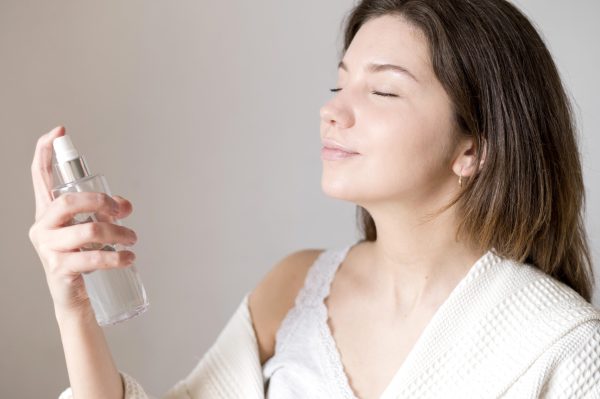
Safer alternatives for cat owners:
Hydrosols / floral waters are a safer option for using on cats. They contain an extremely low concentration of essential oil. Hydrosol is the aromatic water that remains after the steam distillation of plant matter. Please understand that hydrosols are are not the same as aromatic mists which are essential oils diluted in water.
Use personal inhalers, aromatherapy jewellery, body mists or roll on blends on yourself rather than diffusion, ensuring the pet does not lick the oil from your skin.

Can I still use flameless wax and candle warmers containing essential oils instead?
Wax warmer melts using essential oils are a less concentrated alternative to ultrasonic diffusion as they do not emit micro droplets of vapour in the air. They are also not the same fire hazard as burning candles. However, as there is no testing in this matter (would be unethical), I still feel it is best to use with caution and leave cats and small animals out of the room whilst using these methods. Also be cautious with using reed diffusers. Whilst these are considered safer than ultrasonic diffusion in regards to inhalation, the main concern is to ensure that your cat will not knock the reed diffuser over and come in physical contact with the oil.
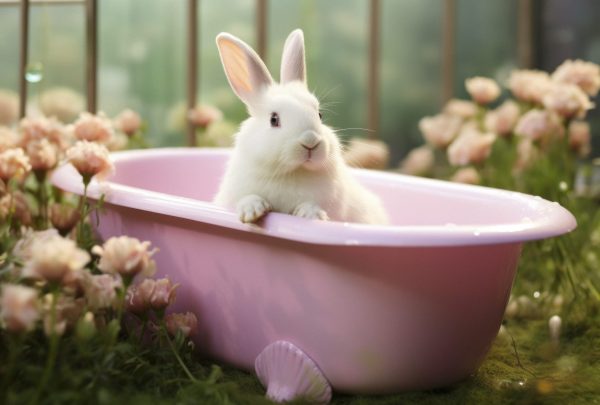
SMALL ANIMALS:
The same rules above apply to small animals such as rabbits, reptiles, rodents, birds & fish. It is best to avoid using essential oils around small animals completely. Their tiny bodies are just not able to process concentrated amounts of therapeutic essential oil.
Move small animals, cages and tanks outside or into a separate room whilst diffusing. Do not spray essential oils on or near small animals. Do not allow small animals to come in contact with your skin if you have applied them to your body. Air the room out after diffusion before placing the small animal back into the room.
In the event that exposure and an adverse reaction occurs please seek medical advice from a veterinarian.
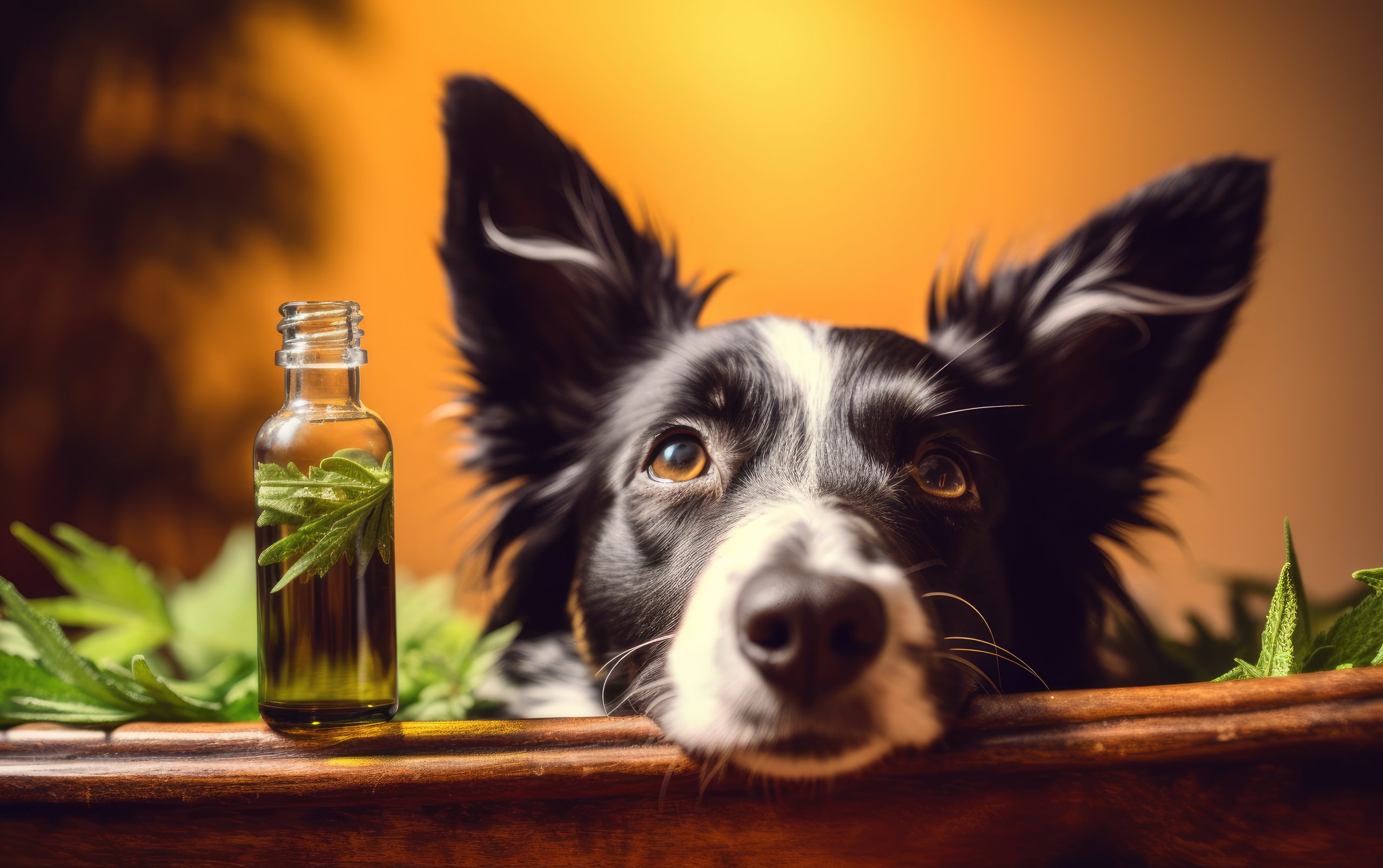
DOGS:
Whilst essential oils are less adverse to dogs, I still suggest to always leave the door open when diffusing them in the home. This gives them the option to leave the room if the scents are too overwhelming for them.
Stick to the same rules that would apply if you were diffusing around a child. Keep the time for diffusion at a minimum. Use less drops than usual. 30 minutes diffusion time would be sufficient as well as using intermittent settings. Extended periods of diffusion are not recommended for humans let alone animals.

Avoid diffusion and using essential oils on puppies under 10 weeks of age.
Do not add essential oils to your pets drinking water or food.
Dilute essential oils in carrier oil before using essential oils topically on dogs. A 1-3% dilution is recommended depending on the size of the dog and which conditions you are helping to treat. It is preferable that you only use essential oils on dog if you are actually helping to treat them with an emotional or health related issue.
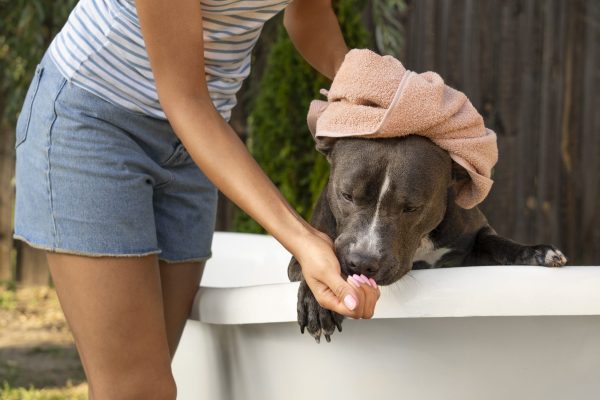
Because dogs are more sensitive to essential oils than humans, essential oils should also be diluted the same way when offering for your dog to inhale. An example of this method would be placing essential oil diluted in carrier oil into an essential oil bottle with reducer cap and allowing the dog to smell the oils. Do not allow the dog to lick the oil.
Hydrosols are always a safer option for use around puppies and dogs.
Store essential oils in a safe spot where pets can not reach and get to them.
If using essential oils in a pet rinse or bath they must be diluted first in castile soap or carrier oil. Essential oils and water do not mix and will float on top of the water, which is essentially the same as applying essential oils neat/undiluted.
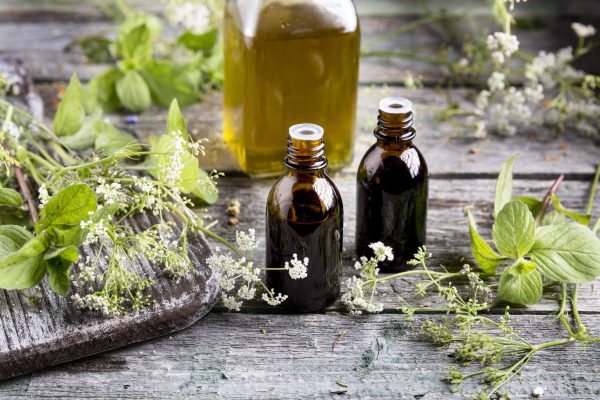
TEA TREE OIL : There is conflicting information about whether Tea Tree is safe for dogs. Many commercial pet shampoos and flea washes contain tea tree oil, which makes it even more confusing. I have personally read reports of adverse reactions to Tea Tree oil being used in both topical applications and diffusion, that’s why I have it listed on the chart below as being unsafe. Some reports suggest it is safe to use at a very low 0.25% max dilution ( equals 3 drops per 50ml carrier oil approx). However personally I feel that when in doubt – Leave it out!
Essential oils that are generally considered to be safe for dogs by animal aromatherapy experts:
Angelica Root, Basil (linaloo), Bergamot, Black Pepper, Cajeput, Caraway, Cardamom, Carrot Seed, Cedarwood (Atlas), Chamomile (German & Roman), Cinnamon Leaf, Cistus, Citronella, Coriander, Cypress, Elemi, Eucalyptus, Fennel (Sweet), Frankincense, Geranium, Ginger, Grapefruit, Helichrysum, Juniper Berry, Lavender, Lemon, Lemongrass, Mandarin, Marjoram (Sweet), Melissa, Myrrh, Neroil, Niaouli, Nutmeg, Opoponax, Orange (Sweet & Blood), Palmarosa, Patchouli, Peppermint, Petitgrain, Plai, Rosalina, Rose (Damask, Bulgarian), Rosemary, Sandalwood, Spearmint, Spikenard, Tangerine, Thyme (linaloo), Valerian, Vanilla, Vetiver, Yarrrow & Ylang Ylang
HOWEVER PLEASE NOTE: All animals are different and can react differently to essential oils. It’s important to monitor them when using regardless how safe they are considered to be. Never use essential oils neat (undiluted) on your dog.
intensity + duration + frequency =
higher risk of an adverse reaction
Start with the minimum dilution or minimum diffusion time and observe how your dog reacts. Look for signs of any negative reactions.
Discontinue use if adverse reaction occurs and seek medical advice from a veterinarian.
Please consult with a holistic vet or a professional trained in aromatherapy for pets regarding the individual health concerns of your pets.
UNSAFE ESSENTIAL OILS FOR DOGS & CATS
Dogs + Cats
- Anise (Pimpinella anisum)
- Birch (Betula)
- Bitter Almond (Prunus dulcis)
- Boldo (Peumus boldus)
- Calamus (Acorus calamus)
- Camphor (Cinnamomum camphora)
- Cassia (Cassia fistula)
- Chenopodium (Chenopodium album)
- Clove (Syzygium aromaticum)
- Garlic (Allium sativum)
- Goosefoot (Chenopodium murale)
- Horseradish (Armoracia rusticana)
- Hyssop (Hyssopus sp. with the exception of Decumbens)
- Juniper (Juniperus sp. with the exception of Juniper Berry)
- Mugwort (Artemisia vulgaris)
- Mustard (Brassica juncea)
- Oregano (Origanum vulgare)
- Pennyroyal (Mentha pulegium)
- Thyme Red or White (Thymus vulgaris)
- Rue (Ruta graveolens)
- Santolina (Santolina chamaecyparissus)
- Sassafras (Sassafras albidum)
- Savory (Satureja)
- Tansy (Tanacetum vulgare)
- Tea Tree Oil (Melaleuca alternifolia)
- Terebinth (Pistacia palaestina)
- Thuja (Thuja occidentalis)
- Wintergreen (Gaultheria procumbens)
- Wormwood (Artemisia absinthium)
- Yarrow (Achillea millefolium)
Cats
- Bergamot (Citrus bergamia, Citrus aurantium subsp. bergamia)
- Clementine (Citrus clementina, Citrus reticulata var. clementina)
- Clove Bud, Leaf, Stem (Eugenia caryophyllata, Syzygium aromaticum)
- Eucalyptus (Eucalyptus globulus, Eucalyptus radiata, and other species)
- Fir (Abies balsamea and other varieties)
- Frankincense (Boswellia carterii, Boswellia frereana, Boswellia papyrifera, Boswellia serrata, and other species)
- Grapefruit (Citrus paradisi)
- Juniper/Juniper Berry (Juniperus communis)
- Lavender Spike (Lavandula latifolia, Lavandula spika)
- Lavandin (Lavendula x intermedia, Lavandula hybrida, Lavandula hortensis)
- Lemon (Citrus limon)
- Lime (Citrus aurantifolia)
- Mandarin (Citrus reticulata, Citrus nobilis)
- Orange Bitter, Blood, Sweet (Citrus sinensis, Citrus sinensis var sinensis, Citrus aurantium var. sinensis)
- Oregano (Origanum vulgare, Origanum onites)
- Peppermint (Mentha piperita)
- Pine (Pinus sylvestris, and other varieties)
- Rosemary (Rosemary officinalis)
- Sage (Salvia officinalis)
- Spearmint (Mentha spicata, Mentha cardiaca, Mentha crispa, Mentha viridis)
- Spruce (Picea mariana, Picea nigra, and other varieties)
- Tangerine (Citrus reticulata, Citrus nobilis, Citrus tangerine)
- Tea Tree (Melaleuca alternifolia, Melaleuca linarifolia var. alternifolia)
- Thyme Red or White (Thymus vulgaris, Thymus zygis)

Related Sources & Reading:
Book : The Aromatic Dog – Nayana Morag
Book: Essential Oils For Animals – Nayana Morag
Book: Holistic Aromatherapy For Animals – Kristen Leigh Bell
Link: Robert Tisserand – Cats & Essential Oil Safety
Link: All Natural Pet Care Blog
Link: Essential oils for cats : Are they safe?
Disclaimer : The information contained on this website is for educational purposes only. The traditional and suggested uses listed here are for reference only and under no circumstances should they be taken as recommendations for cures or treatments for diseases or medical conditions. Purple Tree Pets shall not be responsible for any damages resulting from use of or reliance upon this information. Therapeutic oils are used to support natural body functions and work in harmony with our body’s physiology. The information on this website should not be used as a substitute for medical counselling with a veterinarian or other health professional. Always keep essential oils out of reach of children and pets and consult a medical practitioner before use during pregnancy or other medical conditions. If misuse of essential oils occurs please phone your vet or the poisons information centre straight away – 13 11 26
This article was originally published in February 2018 on the Aromatherapy For Australia website. Some information may be outdated. This article that I wrote was taken from an old website of mine when I was practicing as an aromatherapist.

